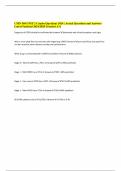Samenvatting
Samenvatting Digital Food Marketing college aantekeningen + samenvatting verplichte artikelen
- Instelling
- Wageningen University (WUR)
Samenvatting voor het vak Digital Food Marketing gegeven aan Wageningen University. Deze samenvatting bevat aantekeningen van alle colleges + een samenvatting van de bijbehorende artikelen.
[Meer zien]













